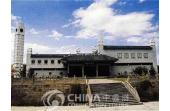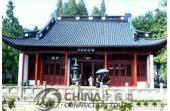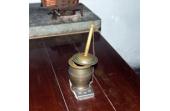Hangzhou, capital of Zhejiang Province in East China, is one of the more modern and prosperous cities in China, about
100 kilometers (60 miles) southwest of Shanghai. It sits at the
southern end of the Grand Canal and is one of China's seven ancient
national capitals.
When Marco Polo came to Hangzhou in the 13th century, he declared it to be “the
most beautiful and elegant city in the world". There is a popular
saying: "Above there is heaven, below there are Hangzhou and
Suzhou." Hangzhou's "heavenly" beauty attracts hundreds of
thousands of tourists to its exquisite West Lake (Xi Hu) area each
year to enjoy the placid lake, beautiful gardens, reflecting pools,
lavish temples and lakeside teahouses.
Hangzhou began to prosper and flourish in the Tang Dynasty
(618-907). It was the capital of the Wu and Yue States in the 10th
Century during the Five Dynasties Period, and had its political
heyday in the Southern Song Dynasty (1127-1279), when it served as
the capital of China. Hangzhou witnessed a commercial boom in the
Ming (1368-1644) and Qing (1644-1911) Dynasties, which is
continuing at present.
There are many well-known historical and cultural sites in the areas around West Lake. Examples are the Lingyin Temple and
Six Harmonies Pagoda. Hangzhou is also well known for its silk and
tea. A trip to Hangzhou can be easily combined with a visit to a
tea plantation in the hills near the West Lake.
Tips: The most famous product of Hangzhou is tea, and you have the
chance to enter a tea plantation, see its manufacture, and even
pick the tender tea leaves in April or May. After the plantation
tour, the girls will show you the Chinese way to make and drink
tea. Usually it is quite strong, so if you are not used to tea in
your daily life we suggest a little taste at first. Previously
clients have been known to experience discomfort from drinking too
much.












